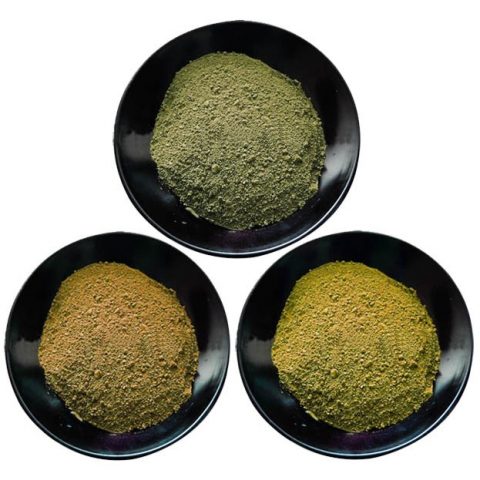
A leafy drug that has seen increased use in recent years as a means of easing withdrawal from opiates or attaining a new, as yet mostly legal high, is also being linked to serious health risks and increased incidences of toxic exposure.
Kratom, a plant-based drug indigenous to Southeast Asia that has become prized by users for both stimulant and opiate-like properties (depending on the amount consumed), has been the target of new concerns and warnings from Federal health agencies.
Despite disturbing reports about the drug’s potential for misuse, instances of poisoning when taken in larger doses, and even evidence of dependence and withdrawal when used regularly, the plant-based alkaloid still has staunch supporters, is marketed aggressively online as an herbal remedy, and remains legal in many states.
All of these factors contribute to confusion or at least mixed messages about the age-old drug and beg the question of whether or not the plant is a kind of natural panacea or simply another dangerous substance that is still misunderstood and free of proper regulation. A closer look here may yield some insights.
Kratom (Mitragyna speciosa) has been around for thousands of years. It is a leafy plant derived from a tropical tree that is in the coffee family. In Southeast Asia where it grows, kratom leaves are traditionally chewed whole.
The substance, as it is most commonly packaged and marketed online today (and it is still widely available under the guise of an herbal remedy or supplement) comes to users as a fine powder or capsule, which ranges in color from tan to dark green.
Most who consume it mix it straight with water, with milk, or brew it into a tea. Though discovered as early as the late 19th century by British botanists as a potential “substitute for opium,” kratom didn’t gain a foothold in the U.S. until the early 2000s, when rumors of its usefulness for quitting opiates or treating chronic pain began appearing on sites like Erowid and Bluelight—around the same time opiate prescriptions and opiate-related deaths began to skyrocket.
And catch on it did. Perhaps at least in part because it allowed users hooked on pain pills or heroin to escape the potential stigma – or medical regulation – of suboxone or methadone programs, many who were suffering from opiate withdrawals began to experiment with kratom to relieve uncomfortable symptoms associated with detoxing “cold turkey. ”
And, because the drug acts on the brain’s opiate receptors and has well-documented pain-relieving affects, many saw some relief. According to advocates – and the website www.kratom.com, which markets kratom leaves, powder, and extracts from Thailand – “Kratom makes people feel pain free, strong, active and optimistic,” and the site claims can, ” relieve depression…intensify communicational skills and induce higher motivation.”
The drug also derives from a plant and was heavily marketed as a “natural” and “holistic” remedy, which may have lulled many into a false belief that it was somehow also “safe” or healthy.”
Kratom is somewhat unique in that, in addition to having some utility as a pain reliever, it is also often pursued as a kind of stimulant and (in smaller doses) can produce mild to moderate euphoria around 45 minutes after ingestion that can last for a few hours.
But, like many substances that seem to promise a new consequence-free high or a painless path to recovery, the drug soon started to show its less than perfect side in the form of nasty side effects and escalating presentations at poison control centers and emergency facilities.
The new report released by the CDC reveals that the number of calls to poison control centers increased ten-fold from 2010 to 2015 (from 26 up to 263) and that over 40 percent of these cases were serious enough to pose health risks and require some form of treatment. The most common issues reported in these calls, and in related hospital visits, were tachycardia, agitation and irritability, drowsiness, extreme nausea, hypertension, and hallucinations.
“Every month somebody is trying to get a new ‘safe high’,” said Frank LoVecchio, medical director of the Banner Good Samaritan Poison and Drug Information Center in Phoenix, Ariz. “(Kratom) is definitely not safe.”
Stay Tuned for Part 2…